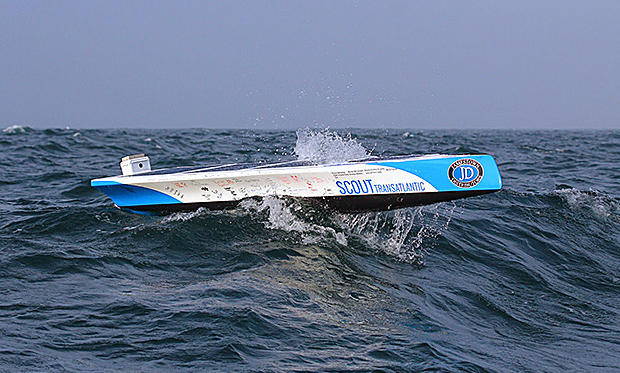Marine robot Scout sailed independently over 1600 kilometers

On August 24 of this year, the sea robot Scout was launched. The launch was from Rhode Island, and the end point of the travel device is Spain. At the moment, this device navigator has covered a path of more than 1600 kilometers.
The project is interesting in that, subject to the successful completion of testing, such devices will perform useful functions, such as surveying various areas of the seas and oceans (again, for various purposes, from climate research to probably exploration).
')
It is logical that for obtaining energy for its electronic components, Scout uses photocells (they can be clearly seen in the photo). Developers get information about the location of the device due to the signals that Scout gives (about once per hour).
The authors of the project are a joint team of students from technical universities in Spain and the USA. Scout began to build in 2012, at the beginning. Its dimensions are not so small, for example, the length is 3.7 meters, and the width is 0.7 meters. The main materials are wood and plastic. Due to some design features, this robot navigator is very stable, and is able to return to its original position even after being turned over.
The total length of the Scout path is 5,900 kilometers, and due to a number of natural causes (storms, winds), the robot always travels at different speeds. So it is quite difficult to calculate when he will come to the final point of his journey. However, so far everything is going well, so one can hope for a successful outcome of this test. You can track the path of the robot here .
Via spectrum
Source: https://habr.com/ru/post/196222/
All Articles